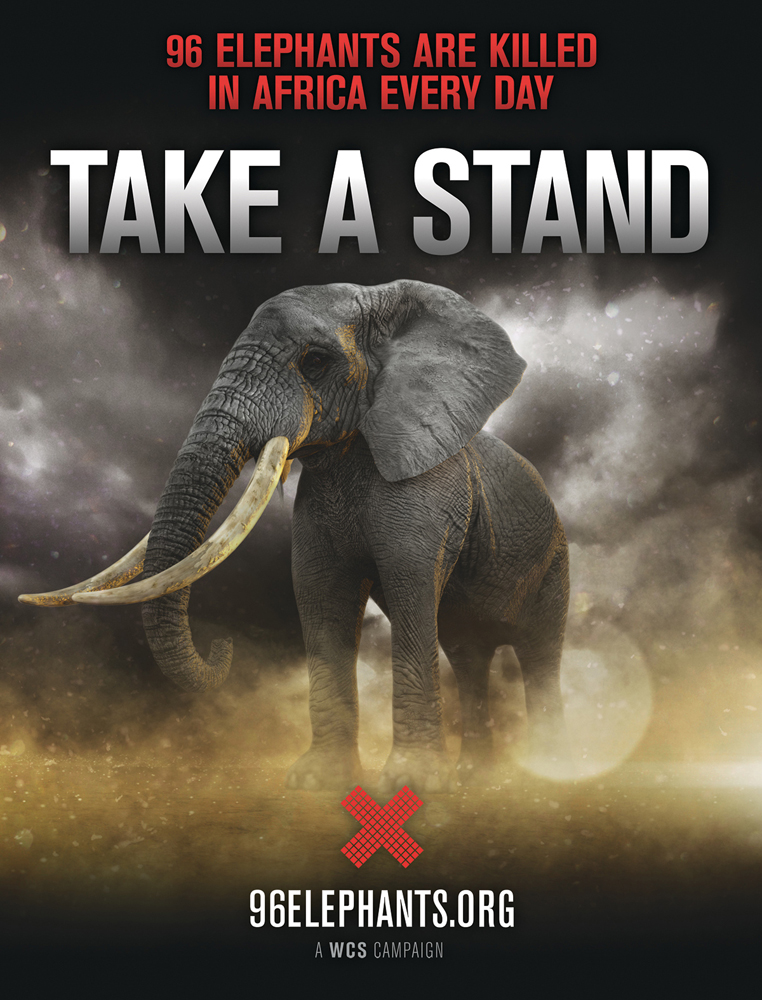1 Ton of Illegal Ivory Will Be Publicly Destroyed in NYC Friday

In a public display against elephant poaching, U.S. officials will pulverize a huge store of illegal ivory tomorrow (June 19) in Times Square, in the heart of New York City.
To staunch the demand for elephants' tusks, officials from federal, state and nonprofit organizations are scheduled to destroy more than 1 ton of confiscated ivory.
"The scale of the crisis has gotten to the point where 35,000 [African] elephants are killed every year — 96 a day," said John Calvelli, executive vice president of public affairs for the Wildlife Conservation Society (WCS). [In Photos: US Destroys Its Elephant Ivory]
Calvelli, and other representatives from government and nongovernmental agencies, will speak at the event, which is scheduled to begin at 10:30 a.m. EDT in Duffy Square-Broadway Plaza in Times Square. Following the speeches and presentations, the ivory will be crushed into powder and fragments for the public to witness.
"Times Square is the crossroads of the world," and is always filled with people from different countries, Calvelli said. "What happens in Times Square gets amplified around the world."
Illegal ivory
The ivory stockpile mostly came from an undercover operation conducted by the U.S. Fish and Wildlife Service (FWS) in Philadelphia in 2009, Calvelli said. Gavin Shire, chief of public affairs for the FWS, said most of the confiscated pieces are large carved statues and tusks. Additional ivory came from busts made by the New York State Department of Environmental Conservation, including one in 2012 that resulted in $2.4 million worth of ivory being confiscated and that carried a $50,000 penalty, Calvelli said.
Sign up for the Live Science daily newsletter now
Get the world’s most fascinating discoveries delivered straight to your inbox.
The only other ivory crushing in the U.S. was held in Colorado in November 2013, during which more than 6 tons of ivory was destroyed. The act spurred crushes in countries around the world, including France, Belgium, China, Hong Kong and the Philippines.
Since 1989, 13 nations, including six African countries, have burned and crushed almost 150 tons of confiscated ivory, representing slightly more than 13,600 elephants, according to the WCS's "96 Elephants" initiative, named for the 96 elephants killed every day in Africa.
Wild elephants
There are two species of elephant: the African elephant (Loxodonta africana) and Asian elephant (Elephas maximus). The Asian elephant was listed as an endangered species in 1976, and commercial trade of the animal and its parts is prohibited under federal law.
African elephants tend to be bigger and have larger tusks than their Asian counterparts, and were listed as a "threatened" species in 1978, which means the species is likely to become endangered if no interventions are put in place. From around 1980 to 1990, the African elephant population decreased by almost 50 percent. In 1989, the federal African Elephant Conservation Act put a ban on the import of African elephant ivory to the United States from any country, unless the elephant was killed before 1989.
To get around this embargo on younger ivory, Calvelli said that poachers and traders rub coffee on ivory and bury pieces for significant stretches of time to pass them off as antiques with "wear and tear."
Furthermore, determining the age of an ivory bracelet or statue is complicated, Calvelli said. Elephants in the wild typically live 30 to 50 years, but to accurately assess the age of an ivory trinket, the material would have to come from the root of the tusk. Just like human hair, the farther the distance from the point of growth, the older the material is.
"Elephants don't grow on trees," Calvelli said, noting that once an elephant is killed and its tusks are removed, the animal is often left to rot where it was found. [In Photos: Endangered and Threatened Wildlife]
Sending a strong message
Instead of crushing the ivory, some members of the public have suggested that the government should sell it to raise money for conservation. However, Shire said that selling ivory is illegal and would send a message that the poached ivory has value.
After the confiscated ivory is crushed in Times Square, it will be added to the 6 tons of crushed ivory in Colorado, Shire said. Earlier this year, the FWS asked the public for ideas on what to do with the ivory dust. The only stipulation was that any sort of structure made from the ivory should carry a strong message to stop wildlife trafficking and the illegal ivory trade, ultimately in hopes of squelching demand for the material. The FWS was interested only in creations that would not imbue the ivory with any value, whether artistic or monetary, Shire said. "The aim was to show that ivory has no value when it's not on an elephant," Shire said.
The FWS is currently reviewing possible ideas, and plans to announce a winner in the near future.
The FWS is leading the "Ivory Crush at Times Square" event, with support from organizations like the Wildlife Conservation Society and New York State Department of Environmental Conservation, among other groups.
Elizabeth Goldbaum is on Twitter. Follow Live Science @livescience, Facebook & Google+. Original article on Live Science










